

THIS SECTION OF THE BOOK delivers a simple A–Z guide to the most powerful, common medicinal foods on the planet. You will find that some obvious foods in the sequence are not included. This is because there are some foods that are very powerful from a purely nutritional perspective, such as oranges and their vitamin C content. The focus of this book is the foods that are powerful for reasons that stretch far beyond the scope of mere nutrition. Foods included are those that possess some powerful phytochemicals that make the foods more than just sources of fuel and nutrients, but make them medicines in their own right.
I have included a breakdown of the phytochemical content and medicinal properties for each food, plus some suggestions as to how they may be used.
Get in that kitchen, get creative, and cook yourself a cure!
We are all familiar with that age old saying, “An apple a day keeps the doctor away.” How true that is! We could be forgiven for overlooking apples as being a medicinal food. They are such a simple everyday staple that we really do take them for granted. Simple though they may be, apples are a wonderful medicine.
One of the most important compounds found in apples is a soluble fibre called pectin. Those of you who make your own jams may well be familiar with pectin. It forms a gelatinous texture, helping jams to set. In the body, pectin has the ability to chemically bind to LDL cholesterol and carry it out of the body, via the digestive tract. Pectin is also known to support digestive transit, as it swells in the digestive tract, increasing bulk of the stool, and making the stool softer and easier to pass.
Apples have also gained a strong traditional reputation as a useful remedy for preventing asthma attacks. This folk remedy has now been backed up by a certain degree of scientific study. Almost every variety of apple contains significant levels of a flavonoid called phloridzin, which is known to help reduce localized inflammation of the bronchioles. Asthma is, after all, an immune-mediated reactive inflammation of the bronchioles, so any natural protection against this reaction is certainly going to aid the condition.

The final compound that is found in quite high levels in apples is a powerful chemical called ellagic acid. This magical antioxidant compound is known to be a powerful antimutagenic. This means that it is able to reduce the ability of potentially carcinogenic substances that initiate potentially cancerous changes in a cell’s DNA. When certain environmental influences bind to a cell, or gain entry to a cell, they have the potential to change the genetic material within the cell’s DNA, and that can lead to a sudden out-of-control cellular division that can be the start of a tumour.
 Best way to use
Best way to use
In general, I would say eaten whole and fresh. In some circumstances they can be cooked. Cooking will destroy some of the antioxidants, but will retain the pectin. I have included a recipe for Apple Jacks on page 64.
One of the most widely consumed foods on the planet, the humble banana is more than just a sweet treat.
Bananas are famous for their incredibly high levels of the mineral potassium. This makes them an ideal food for the health of the cardiovascular system. This is because potassium is key in regulating the heart rhythm and the levels of body fluids. If levels of potassium are slightly higher than sodium, for example, our body will hold onto a lot less fluid. This is very beneficial for our blood pressure, because, the more fluid that the body holds onto, the more blood volume increases. As blood volume increases, simple physics tells us that the pressure within the vessels will also increase.
Bananas also contain a very sticky, soothing carbohydrate that has been traditionally used as a remedy for issues such as gastritis. It seems to soothe inflamed surfaces within the gastro intestinal tract.
 Best way to use
Best way to use
Raw bananas are great eaten whole or mashed with a little honey and mixed seeds. Yum!
Blueberries have become one of the most talked about and completely over-hyped foods on planet earth. These luscious, purple, little treats, are definitely one of the kings of the fruit domain, but have sadly been given an almost mythical reputation.
The most noteworthy property of blueberries is their super high antioxidant capacity. The vivid blue/purple pigment found in blueberry skins is given by a group of chemicals called anthocyanidins. These are the same family of chemicals that are found in grapes and red wine, and offer the health benefits associated with them. Anthocyanidins are essentially antioxidants first and foremost. This means that they help to protect tissues against oxidative damage. This is the kind of damage that is caused by normal metabolic reactions to energy production, or even chemical damage (think cigarette smoke and alcohol). This type of damage is associated with almost every disease at some level or another, from normal ageing, through to the initiation of cancer and heart disease. It is for this reason that high consumption of foods rich in antioxidants is associated with a reduced incidence of such diseases.
 Best way to use
Best way to use
Eaten with a little yogurt. The fats in the yogurt increase the absorption of the antioxidant chemicals.
These delicious treats are easily one of my favourite fruits. The rich juicy flesh is bursting with antioxidants. The darker the cherries the better, as this represents higher levels of antioxidants.
Cherries are most famously used as a remedy for gout. This painful condition arises from crystals of uric acid forming in the joints. This causes spikes of uric acid crystal to press into surrounding soft tissues in the joint, which causes pain and triggers inflammation. Cherries contain a certain type of anthocyanidin (similar chemical to that found in red wine), unique to this fruit, which has been shown to inhibit a substance called xanthine oxidase, which is the enzyme that the body uses to manufacture uric acid. Inhibiting this enzyme will cause uric acid levels in the body to drop, and will reduce the likelihood of an excess starting to crystallize in the joints.
 Best way to use
Best way to use
Eaten fresh ideally. Can also be consumed as a pre-prepared concentrated juice.
Cranberries are synonymous with Christmas dinner, Thanksgiving, or a good Sunday roast. A close cousin to the blueberry, cranberries have a similarly high antioxidant level, coming from their deep red colour pigment.
In traditional medicine, cranberries are noted for their protective action against urinary tract infections. This is due to the presence of compounds called proanthocyanidins. These powerful antioxidants stop bacteria, such as E.Coli, from adhering to the inner wall of the urinary tract. For infection to occur, these bacteria must attach to the inner lining of the urinary tract. When this occurs, the immune system instigates its response, and inflammation occurs, which leads to discomfort and the classical symptom of painful urination and urinary urgency. Preventing these bacteria adhering stops the infection. The proanthocyanidins in cranberry can also pluck them off the urinary tract walls if infection has already set in, thus drastically shortening duration of infection.
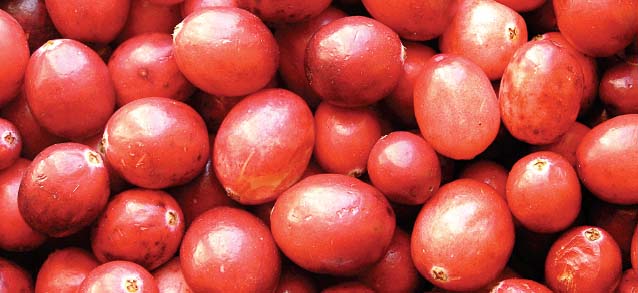
 Best way to use
Best way to use
I personally think that nothing can beat eating them fresh. They are quite sour, and are best mixed with a little yogurt. If you find the fresh berries disagreeable, then consuming the juice is OK, although definitely second place in my view.
I absolutely love dates (not just the dinner and flowers kind). They are like sweets to me. One of my favourite snacks to satisfy a sweet tooth is dates dipped in a little organic peanut butter.
Dates are a rich source of a special, large, and complex sugar, called beta glucan. This incredible sugar has some very profound health benefits. Firstly, it has a great reputation for removing LDL cholesterol from the body. It does this by chemically binding with it, rendering it inactive, and enabling it to be carried out of the body. The second, and probably most profound, effect of beta glucan is its ability to influence the immune system. It has been shown to cause a systemic rise in white blood cell numbers. It can actually cause the body, indirectly, to manufacture more white blood cells, and cause them to act in a far more aggressive manner. This effect has most famously been demonstrated in the medicinal mushrooms such as shiitake, maitake, and reishi. The beta glucans found in these mushrooms are the most biologically active and aggressive, but foods such as dates will still have this activity to a lesser degree.
 Best way to use
Best way to use
I tend to eat them just as they are or add them to things such as flapjacks.
Grapes have always been associated with health and recovery. They seem to be the staple food taken into hospitals as a gift for sick friends and loved ones.
Grapes (red and purple variety) have probably gained their best reputation as a tool for protecting and maintaining heart health, especially in their fermented form (vino of course!). They contain a chemical pigment called oligomeric proanthocyanidins. These are part of the red/purple pigments in the grapes. These compounds are known to reduce the oxidization of LDL cholesterol, thus preventing arterial damage. It isn’t actually cholesterol itself that causes damage to the circulatory system, rather the body oxidizing the cholesterol, which then causes inflammation, which in turn causes damage to the lining of the arteries, which then leads to blood clot formation.
Oligomeric proanthocyanidins have also been shown to cause a notable relaxation of the muscles that line the blood vessel walls. In doing so, they allow the blood vessel walls to widen, thus increasing their internal space. Simple physics tells us that, if the contents of the vessel (i.e. blood volume) stay the same, but the size of the vessel increases, the pressure within that vessel will, of course, go down.
Grapes also contain another compound believed to be linked to their cardioprotective properties. That is the antioxidant compound resveratrol. This compound is known to reduce the build-up of plaques within the artery walls, thus minimizing the risk of vascular injury, and the inevitable clot formation that follows this. Resveratrol is also reputed to be an anti-ageing ingredient for the skin. Best rely on the whole, raw grapes for this rather than the red wine. As with all things in life, there is always a trade off. There would be little point in having lovely wrinkle-free skin, if that was accompanied by a bright red boozer’s nose, and eye bags that would make Miss Piggy look like a beauty queen!
 Best way to use
Best way to use
A glass of a good quality red wine with a meal is one of my ideas of heaven. Not only does this deliver some of the protective properties mentioned above, but alcohol acts as a potentiator. In herbal medicine, we see alcohol as a substance that can drive the active chemicals in plants much deeper into the physiology. It basically makes the compounds more bioavailable to the body. However, wine shouldn’t be over consumed. Once you move past 1–2 glasses a day, the protective properties are taken over by damage and irritation to the liver and upper digestive tract. So be sensible. The best way really is eat the grapes whole and fresh. But I guess we all need a little fun.

I have included these two fruits together, as, aside from a couple of tiny insignificant chemicals, they are virtually identical. Lemons certainly have to be one of the most widely consumed fruits on the planet. Limes are responsible for the discovery of vitamin C. When British sailors went out to sea on long journeys, most would end up suffering from the deficiency condition of scurvy. It was observed eventually that expeditions that carried limes on board for consumption would have no episodes of scurvy whatsoever. This eventually led to the discovery of vitamin C. This also led to us Brits earning the unfortunate nickname of limeys!
Both lemons and limes have a very high concentration of a compound called kaempferol. This substance is known to be a powerful protective agent against cancer, as it is known to reduce uncontrolled cell division. It seems most protective, at least from an epidemiological perspective, against breast cancer.
Kaempferol is also a potent antibiotic agent. This was first demonstrated in village populations in West Africa, where there was frequent and aggressive cholera outbreak. Lime juice was added to their staple rice-based dish, and episodes of cholera began to decline. This led to further investigation that revealed that kaempferol was the magic bullet in this case.
Lemons and limes also offer further cancer protective activity, thanks to the presence of a powerful phytochemical called limonin. Limonin is believed to be chemoprotective. This means that it is able to defend cells against the damaging effects of carcinogens. Carcinogens are chemical compounds, both natural metabolic by products and environmental chemicals, that can cause damage to a cell’s DNA, which may then lead to an unnatural division and cancerous changes of the cell.
 Best way to use
Best way to use
Add fresh lemon or lime juice to salad dressings, dips, sauces, or to hot water.
Mangoes are one of my favourite fruits. I’m actually eating an ice cold one from the fridge as I write this. They are sweet, aromatic, and so very exotic.
Apart from being very high in the antioxidant compound beta carotene, they are also a useful digestive aid. Similar to the papaya, mangoes contain some highly active enzymes that are beneficial in the correct digestion of proteins. These enzymes are so powerful that mango is sometimes used as a meat tenderizer.
 Best way to use
Best way to use
Eaten fresh, or blended with natural yogurt and a little water to make a refreshing mango lassi.
Papaya is a very delicious sweet fruit. Not one of my particular favourites, but it certainly satisfies the sweet craving from time to time.
Papaya contains some very powerful enzymes. The most well known of these is a compound called papain. This is a powerful protein-digesting enzyme. I often recommend papaya, or an extract of papain, to individuals who have had long-standing illness or are weak and need building up, as it increases their protein digestion and absorption. Papain is also commonly used for allergies, especially hay fever. This is because it is believed to be an effective natural antihistamine. In allergic reactions such as hay fever, there is a localized histamine release that is responsible for most of the inflammation and symptoms associated with such conditions. Anything that can manage the levels of histamine produced can have a notable effect upon the severity of such conditions.
 Best way to use
Best way to use
Eaten raw, juiced, or taken as an extract.

Another of my favourite fruits. Pineapples conjure up images in my mind of white sandy beaches and grass skirts. Maybe that’s just me! But their exotic flavour and aroma is certainly comforting on some level.
Pineapples contain a very powerful enzyme called bromelain. This wonderful compound is great for enhancing protein digestion, but its medicinal properties are far more profound than that. Bromelain is a very powerful anti-inflammatory. It can rapidly and efficiently soften swollen tissues, and ease them back to normal functioning. I find pineapple to be a very useful food for arthritics, and those with inflammatory issues of the digestive tract.
 Best way to use
Best way to use
I tend to juice pineapple more often than anything else. It is also great in smoothies too. The most important thing to note, however you choose to eat it, is to ensure that you do not discard the slightly tougher inner core of the pineapple. This contains the highest concentration of bromelain.
Amaranth is not a widely known grain in the Western world. It is a tiny grain that once became a staple food for the Aztecs.
Aside from being a gluten-free grain, rich in protein and every conceivable mineral on earth, amaranth has a track record as being an effective astringent, for use in digestive problems such as excessive diarrhoea. Astringents are essentially plants that help to “dry out” secretory surfaces – such as those that line the gut. They do this by irritating those surfaces, causing them to release proteins that essentially develop a lining on such surfaces, preventing their secretory action. In the context of diarrhoea, the astringent action of amaranth stops too much water entering the digestive tract too rapidly, so helps to give more bulk and texture to the stool.
The most interesting thing about amaranth, however, is its impact upon cholesterol. Something in this grain, yet to be identified, increases the liver’s production of an enzyme called 7-alpha-hydroxylase. This is the enzyme that the liver uses to break down cholesterol into bile acids, which can then be easily excreted via the bowel.
 Best way to use
Best way to use
As a replacement for rice. Boil until soft.
Associated with health food and healthy eating. Mention brown rice to most people, and images of beards and sandals soon arise. One of the absolute staple foods, rice, when prepared in the right way, can be one of the most health-giving foods around. I remember, from my time out in Japan, eating brown rice at least twice a day, my energy levels and digestion were fantastic, and my appetite sustained. This glorious grain is now a common inclusion into my diet.
Brown rice is rich in a whole host of compounds that can help to lower cholesterol. These range from simple dietary fibres, through to more complex phytochemicals. The most interesting of these is a compound called gamma-oryzanol. This compound is well known to reduce the production of LDL cholesterol.

Brown rice also contains a large amount of a group of antioxidant compounds called polyphenols. These antioxidant phytochemicals help to protect the inner lining of the blood vessels against damage.
Aside from this, the amazing fibre content of brown rice makes it a wonderful food for diabetics, and anyone wanting to balance out their blood sugar. This is because it is in itself a very slow release sugar food. However, its fibre also slows down the release of the sugars from other foods consumed with it. This means that the meal will not cause rapid rises in blood sugar or the inevitable insulin spike that follows.
 Best way to use
Best way to use
I tend to use brown rice with curries and the usual dishes that would suit a rice accompaniment. However, it is possible to use the rice flour to make gluten-free pasta and bread.
Buckwheat is another grain that is not that well known, but is becoming very popular. Eaten widely in Asian countries, such as Japan, it is often ground into a flour to make noodles and pastas.
Buckwheat is incredibly high in a group of antioxidant compounds called flavonoids. Two in particular, rutin and quercetin, really stand out. Rutin has, in clinical trials, been shown to offer significant protection against damage to the inner lining of blood vessels and clot formation. Quercetin, on the other hand, is an incredibly powerful compound that is useful against allergies. During the allergic response, certain white blood cells release a chemical called histamine, which causes a localized inflammatory response. It is the action of histamine that causes many of the symptoms of issues such as hay fever. Quercetin seems to, somehow, inhibit the release of histamine at this local level, so can offer significant improvement in some allergic symptoms.
Both rutin and quercetin have also been associated with a reduction in platelet aggregation. This means that they play a role in protecting us against excessive blood clotting, which helps prevent heart attacks and strokes.
 Best way to use
Best way to use
Buckwheat grains are fantastic toasted and used in breakfast cereals. The most commonly eaten form of buckwheat, though, is soba noodles. These Japanese noodles are heavenly stir fried with vegetables or served cold with a sweet soy and wasabi dip.
Oats are among the most widely consumed grains in the world. They are a breakfast staple in Europe and the US, and have been associated with health for decades. But what exactly is so special about them?
Oats contain a soluble fibre known as beta glucan. This complex sugar forms a gelatinous type texture in the digestive tract. In this state, it can physically bind to LDL cholesterol, and carry it out of the digestive tract to prevent it being absorbed into the bloodstream.
Beta glucan also has a very interesting influence on the immune system. It has been shown in numerous trials to stimulate the production of a group of immune cells called natural killer cells. It does this by having an interaction with patches of tissue in the gut wall called Peyer’s patches. These patches of tissue are basically like surveillance stations, watching what is happening inside the gut. These patches contain a lot of immune cells that tell the rest of the immune system what to do if an invader is making its way into the body via the gut. These cells do this by sending chemical messengers throughout the body in order to recruit the correct type of immune cells for the invader they have come across. Beta glucan fools the cells in the Peyer’s patches that the body is under a specific type of bacterial attack, and causes them to encourage the production of more white blood cells. This response, in short, can strengthen the immune system in times of infection and stress. It is beta glucan that makes medicinal mushrooms such as shiitake and maitake such powerhouses (although the mushrooms contain far higher levels).
Oats have always been traditionally used in Western herbal medicine as a “nervine tonic”, specifically for nervous exhaustion. They seem to have a deeply relaxing and restorative quality on the nervous system. Exactly why this would be the case remains unclear. It may be, at least in part, due to the high levels of B vitamins in oats, as these nutrients are very relaxing and regulating for the nervous system.
 Best way to use
Best way to use
Few things are more comforting than a bowl of warm porridge on a winter’s morning. This is one of the best ways to serve oats, as the heat encourages the release of the beta glucan (this is what makes it go all thick and gloopy). I always advise making porridge with water rather than milk, as the proteins in milk can actually bind to the beta glucan and hinder its absorption by the body.
Often overlooked as a seed, but a seed indeed. These wonderful foods have caused great controversy in recent times, due to their potential properties. The kernels that are most commonly sold in health food stores are of the bitter variety, although sweet ones are available. It is the bitter variety that has the beneficial effects, and the bitter flavour is an indicator of the active constituent.
The most widely publicized compound that apricot kernels contain is an interesting compound called amygdalin – otherwise known as B17. This compound is made up of a whole array of chemicals, including the poison cyanide. This sounds rather dramatic, but is believed to be really quite harmless under normal circumstances. When it is bound within amygdalin, cyanide is inactive because specific enzymes, which are required to release it from its bonds, are not present in healthy cells. However, research is indicating that cancerous cells do have the enzymes necessary for releasing cyanide. When a cell becomes cancerous, there are changes in the cell’s DNA which causes it to behave in an irregular fashion. This includes the manufacture and activity of unique enzymes. When the enzymes begin to work upon amygdalin, the cyanide component of this compound is activated. As cyanide is a potent cellular poison, it causes the cell it is within to die. It is worth bearing in mind that these claims still remain theoretical. What is clear, however, is that there has been an array of positive clinical trials using apricot kernels and B17 in the treatment of cancer. B17 is also a very powerful antioxidant compound, providing all the usual benefits associated with such compounds. This will also provide added protection against the formation of cancerous changes in cells. Much of these findings are thanks to the work of Dr Ernst T Krebs who claimed, “If a person would eat seven to ten apricot kernels a day for life, then barring Chernobyl, he is likely to be cancer free”. It is worthwhile to note, that it is only the bitter variety of this apricot that should be chosen as it is the amygdalin that gives them their bitter taste.
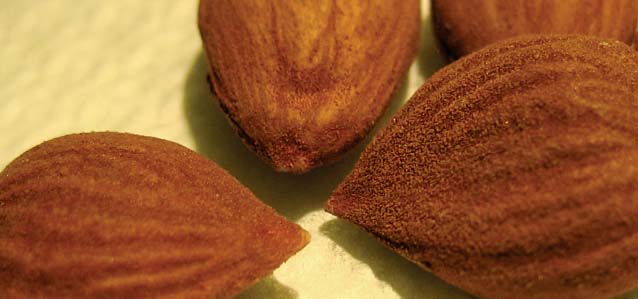
It is recommended by the UK Food Standards Agency that no more than 3–4 kernels be eaten a day, so just eating them as a mid-morning snack can be ideal.
Brazil nuts are one of my absolute favourites. There is just something about their luscious creamy flavour that most people adore. These nuts aren’t necessarily high in any exotic phytochemicals, but I felt them worthy of inclusion, because they are a great food for immunity, and for managing inflammation. This is because they are exceptionally high in the trace mineral selenium. This potent mineral helps the body to produce its own natural antioxidant enzyme, called glutathione peroxidase. This helps assist the body in the breakdown and clearance of waste products from the body. It also helps to regulate the activity of certain groups of white blood cells, so can improve immune function, particularly in inflammatory conditions.
 Best way to use
Best way to use
I love to make a nut pâté out of them, or include them in veggie burgers, or just munch them straight from the bag.
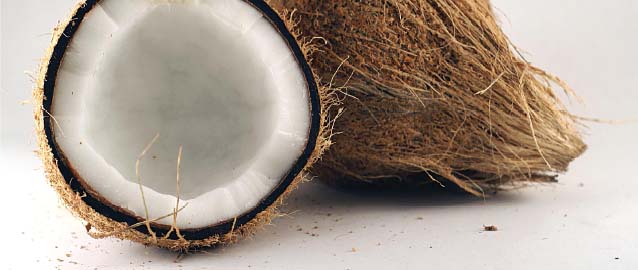
Yes, that’s right... it’s a nut.
Coconut has some wonderful nutritional and medicinal properties. The water within coconuts is the best isotonic drink on the planet. It contains the perfect balance of the electrolytes used by our body – sodium, calcium, potassium, and magnesium. It can rehydrate in minutes.
Coconuts also contain a very unique type of fat, called medium chain triglycerides (MCTs), which are believed to aid in weight loss, due to their ability to force dietary fats into being burnt as energy, rather than used as a storage medium. On a personal note, I always get a little suspicious when I hear of “miracle” weight loss claims for anything, so for me, the jury is still out.
Coconuts also contain a compound called lauric acid, which appears to offer some considerable potential benefits as an antiviral agent. When we take in a source of lauric acid, our body converts it into a substance called monolaurin. This compound can be very protective against all manner of viruses. It works by breaking down certain structures on the outside of fatty coated viruses. In particular, it attacks the structures that viruses use to attach to and enter our cells. Without this ability, the viruses cannot cause infection, cannot replicate, and quickly die out.
Coconut is also very high in another acid called caprylic acid. This is one of the best things for dealing with Candida infection of the digestive tract. Caprylic acid can cause Candida to die almost on contact.
 Best way to use
Best way to use
I use the oil in dishes almost every day. It is great for curries and sweet dishes because of its wonderful flavour. Coconut milk is also a great addition to smoothies, and coconut flesh is wonderful in desserts and sweet, raw food recipes.
Flaxseeds are definitely one of the staple features of any health food shop shelf. Traditionally, flax has been used as a gentle laxative as it has a semi soluble outer coating that forms a gelatinous mass, which can help “move things along” a little. They are also a rich source of omega 3 fatty acids, offering an alternative to oily fish for vegetarians.
The most interesting thing, in my opinion, about flaxseeds, is their content of a group of compounds called plant lignans. Lignans are a type of fibre that is known to bind to oestrogen receptors on the surfaces of cells. This binding is believed to offer protection against some hormone dependant cancers such as breast cancer. Lignans also help to break down and remove oestrogen from the body, by increasing the production of chemicals that facilitate this in the body.
 Best way to use
Best way to use
On cereals, in smoothies, in crackers and breads, or taken in a small glass of water.
These seemingly ordinary little seeds are actually medicinal powerhouses. I love them. Raw, roasted, eaten straight from the bag, or made into a “butter”, I’ll eat them any way that they come.
Pumpkin seeds have long been known as a perfect food for prostate health. This is because they contain a compound called beta sitosterol, which actually helps to inhibit normal testosterone turning into its evil twin – dihydrotestosterone. In the prostate, normal testosterone is conducive to the overall health and normal functioning of the prostate. However, certain circumstances can cause this healthy testosterone to be turned into an aggressively mischievous version called dihydrotestosterone, which can cause enlargement of the prostate, which can be the starting point for prostatic cancer.
Beta sitosterol is also highly beneficial to heart health. This is because it helps to reduce cholesterol. You may well be aware of the myriad of drinks and spreads, loaded with “plant sterols” that reduce cholesterol. Well, beta sitosterol is one of the most powerful of the plant sterols. Essentially, these compounds help to block the absorption of cholesterol in the intestines. When our liver manufactures cholesterol, a large proportion is actually released into the intestine from the liver where it is reabsorbed back into the bloodstream where it can do its work. Blocking this intestinal absorption has been shown to notably reduce blood cholesterol levels.
Pumpkin seeds also contain another powerful chemical called cucurbitin. Cucurbitin is a major constituent in these seeds and has been shown to have a very powerful anti-parasitic effect in many test tube studies. This gives pumpkin seeds the potential to be used as remedies against such digestive issues as Candida, and maybe as an adjunct in the treatment of food poisoning.
 Best way to use
Best way to use
Use raw whenever possible as the cooking process can seriously damage the beneficial fats that these seeds contain. I like to use them in pâtés, salads, or eaten whole as a snack.
This sweet and aromatic spice is recognizable to almost everyone, and has been a sweetshop favourite for centuries. In the same family as celery, fennel, dill, and carrots, aniseed has been used in traditional remedies in Europe since the fourteenth century, across many countries. The fragrant oil anethol, the substance that gives the instantly recognizable smell, is responsible for the medicinal actions of this plant. The oil has the ability, once ingested, to relax smooth muscle surfaces that it comes into contact with. Smooth muscle is the muscle that makes up the walls of tissues such as blood vessels and the digestive tract. This muscle is laid down in several layers that run in differing directions, so that when they contract or relax, they alter the shape and diameter of the organ that they compose. This contraction and relaxation regulates the normal functioning of the organ in question. Ingesting plants that can have an effect on this musculature can literally manipulate normal functioning to give a therapeutic effect.
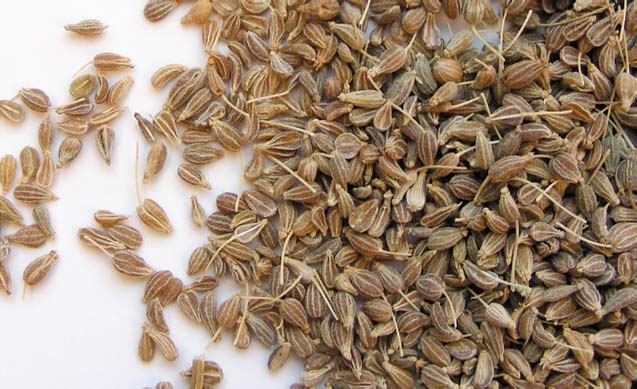
Aniseed is traditionally used in tea form as an antispasmodic for the intestines. This means that, due to the actions described above, it can relieve the strong, spasm-like pain associated with conditions such as IBS and colic. The wonderful fragrant essential oils are able to relax smooth muscle of the intestinal walls, thus easing such excessive spasms – which are, in fact, just a more forceful and rapid manifestation of our normal intestinal contractions peristalsis. Aniseed is also considered an effective carminative. This means that it is able to disperse gas within the digestive system, thus making it an excellent remedy for any type of bloating and digestive discomfort, and proves especially useful in infant colic, Candida infection, and IBS.
Aniseed has also been used as a traditional cough remedy. Its traditional preparation was infusion into spirits or wine, to make a tonic liquor called Anisette. This remedy has been thought to open up the small tubes (bronchioles) of the lungs, and ease bronchitis and asthma. If the bronchioles are dilated and widened, it makes it far easier to cough up or move phlegm, not to mention increasing airflow. The seed was also ground and used in lozenges to ease mild coughs. This allows the herb to gently coat the area and act for longer.
 Best ways to use
Best ways to use
For digestive complaints, tea or any kind of water infusion is the best method for rapid results. I would recommend 2–3 teaspoons of seeds, gently crushed with the back of a spoon, per person, per cup.
This vibrant green staple of Italian cuisine is familiar to us all, and is one of the easiest home remedies to obtain or to grow. It is also one of the easiest to use, as it can be added directly to your food in a million and one different ways. Used as medicine all over the world, basil has a history of medicinal use in traditional Chinese medicine spanning more than 3,000 years. Its use in European medicine most likely spans a similar time frame.
Being in the same family as mint, basil shares some of the same properties. As a result, basil is a useful remedy for bloating, digestive cramps, flatulence, and colic. As with many fragrant spices, it is the potent fragrant oils found within that have a relaxing effect on the musculature of the intestinal wall, easing cramps and spasms.
Basil is also an effective anxiolytic (calms anxiety) and sedative, so is a tasty stress-relief aid. Many traditional texts have made the recommendation of basil tea for mild depression and melancholy. This traditional application, however, is not well supported in modern herbal literature, so its effectiveness remains unclear.
The action of basil that interests me the most, however, is its anthelmintic/vermifuge activity. These old medical terms refer to a remedy that has the ability to rid the body of parasites such as yeasts and worms. In today’s society of convenience foods and high sugar intake, the presence of parasites, particularly yeasts such as Candida albicans is a very common problem. It is therefore reassuring that there are foodstuffs that we can consume (along with getting our diet right in the first place) to aid our body’s defence against these troublesome parasites. Again, the powerful essential oils present in basil are believed to be responsible for this action. Such oils can be really quite toxic to more simple organisms and kill them off rapidly. The key to this application, however, is to make sure that the foodstuff is not cooked so as to gain the main benefit.
 Best way to use
Best way to use
The good thing about basil is its versatility. It can be used in so many dishes. However, I’d recommend, for maximum effect, that you use this ingredient raw where possible, in order to preserve its essential oils. See page 36 for a wonderful pesto recipe!
This is one of my favourite medicinal spices. Hailing from India, its beautiful flavour and aroma lend itself well to both sweet and savoury dishes, not to mention herbal preparations, traditional to this country.
Cardamom is commonly used as a digestive aid in many traditional medical systems, again due to the presence of some powerful fragrant essential oils that have the properties outlined above, making it another remedy to consider in digestive complaints such as nausea, bloating, and digestive cramps.
There is, however, one therapeutic use of cardamom that is unique among the spices, and that is as an aid in the treatment of mild depression and melancholy. There is a large amount of empirical evidence around to support this, and I have also observed this effect in clinical practice. However, clinical trial data is very limited at present. It is believed that compounds in cardamom may interact with serotonin receptors in the digestive tract. Serotonin is a neurotransmitter (communication and signalling molecule produced by the nervous system) that is associated with mood elevation and a more relaxed state. It is thought that some of the chemistry of cardamom may actually bind to serotonin receptors within the walls of the digestive tract, and cause a rise in this neurotransmitter to occur throughout the body. It is important to remain aware that this is still a theory at present and that more data needs to be acquired. What is a certainty is that cardamom works – somehow!
 Best way to use
Best way to use
Cardamom is amazing in teas, or used in desserts. My favourite tea is cardamom, skullcap, lavender and rose.
This powerful fiery spice that gives curries their fire has been used in almost every culture in one way or another for both culinary and medicinal purposes. It is indeed a very versatile medicine, with its effects spanning many body systems and physical conditions and situations.
One of the major applications of chilli is as a cardiovascular tonic that enhances circulation. The powerful chemical capsaicin, that gives chilli its fiery flavour, has a very potent effect on the musculature of artery walls. In short, it almost forces a relaxation of the arterial walls via irritating the smooth muscle causing it to suddenly relax, thus widening the blood vessels and enhancing circulation – especially to the peripheries (fingers, toes, and brain). Another positive consequence of this action is that blood pressure is lowered – the vessel has widened, so its internal diameter increases, putting less pressure on the vessel wall, lessening the likelihood of injury.
Chilli is also a renowned painkiller when used topically (on the outer surfaces). When it is applied in this manner to a painful area, it has an instant initial irritating effect on the nerve endings of surrounding tissues. This irritating effect increases the release of the pain-signalling chemical known as “substance P”. Now, this may sound somewhat counter intuitive to increase the production of a nerve-signalling compound that signals pain, but, the ingenious action of capsaicin is to not only increase the release of substance P, but to block its re-uptake by the nerve. After applying capsaicin to the affected area a few times, the levels of substance P in the nerve endings of surrounding tissues have essentially been spent, so there is nothing left to send the pain signal to the brain. Isn’t Mother Nature amazing?! Pain killing aside, topical application of chilli can have an immense stimulatory effect on circulation to that area. To this end, these two actions make it a perfect remedy for cold stiff arthritis.
Chilli is also gaining a reputation as a potential weight loss tool. While I don’t like any “magic bullet” type claims being made for individual ingredients, it is useful to be aware of such things. Again it is the spicy compound capsaicin that is reputed to deliver these effects. One study carried out in Taiwan suggests that capsaicin may have the ability to destroy cells called preadipocytes. These are juvenile cells that eventually turn into fat cells. Other small-scale studies have revealed that taking an extract of capsaicin increases the overall metabolic rate in test subjects, with some significant weight loss observed.
 Best way to use
Best way to use
Chilli does need to be used with caution, as it is so irritating. It can be used in cooking to generate the internal stimulating effects described above. It can also be puréed and applied directly to the skin for pain relief. For best results, cover this purée with a plaster or bandage.
I absolutely adore the taste of this spice and it is a regular feature in a lot of my cooking. I find it has a comforting and nurturing quality. It has been used as a medicine in both Eastern and Western cultures for hundreds of years and is very diverse in its applications.
The first application that comes to mind when I think of cinnamon is gentle stimulation of the circulatory system. It is most likely that it is the essential oils contained in cinnamon that have this effect. The likelihood is that these compounds have the ability to relax the musculature of the vessel walls, leading to an overall widening of the vessel. This is useful in issues such as cold hands and feet. I also find that cinnamon is particularly useful in painful menstrual cramps, where improved blood flow in the pelvic region can relieve the symptoms somewhat.
Cinnamon is also a powerful antifungal agent, especially for fungal infections of the digestive tract, such as Candidiasis. Candida albicans infection is something that is drastically on the rise in modern society. With our increased intake of convenience foods, high sugar snacks, alcohol, and yeasty breads, yeast infections of the gut are becoming more prominent and have been linked with food allergies, recurrent headaches, skin rashes, and fatigue, to name but a few ailments. The number one key to tackling this type of infection is adopting the correct diet and lifestyle, but there are herbs and remedies that can help. The powerful essential oils found in cinnamon contain active compounds called cinnamaldehyde, cinnamyl acetate, and cinnamyl alcohol that give it its potent antifungal properties. These oils are believed to kill fungi such as yeasts and Candida, on contact, causing them to die off, and slough off from the gut wall ready for expulsion via the bowel.
Cinnamon is now getting a considerable reputation as a blood sugar balancing agent that has proved to be useful in the management of type 2 diabetes. Type 2 diabetes is very different from the diabetes that individuals are born with, that requires a lifetime of self-administered insulin injections. It is a disease of modern living. Type 2 diabetes is essentially a state in which the cells of the body have started to ignore the signal of insulin. Insulin is released when our blood sugar rises up beyond a certain threshold level. Its job is to tell the cells of the body that they need to pull this sugar in, and convert it into a usable energy source. This message is received via receptors that line the outside of cells in body tissues. Once the cells receive the signal, they take action. Now, in type 2 diabetes, it is safe to assume that an individual’s blood sugar has been getting very high, for a very long time. By very high, I mean the type of sugar rush that comes from eating sugary snacks, refined white carbohydrates, and excessive alcohol. In the initial stages, cell receptors listen to the constant signalling from insulin that arises from consuming such foods. However, after a while the cell receptors soon start to suspect that something is awry. They start to wonder why there is so much insulin in circulation, and think that maybe the insulin has gone a little crazy and doesn’t know quite what it is doing. Therefore they begin to ignore its message. As a result of this, the levels of blood sugar start to rise as less and less of it is pulled into the cells. It is at this stage that type 2 diabetes is diagnosed. It is believed that cinnamon has the ability to directly influence special structures on the outer surfaces of cells known as glucose transporters. These structures are used by cells to grab glucose from the blood and fluids that bathe the tissues, and pull it into the cells for conversion into energy. Studies suggest that cinnamon has the ability to increase the amount of these that are produced and how effectively they take glucose from the circulation into the cell.
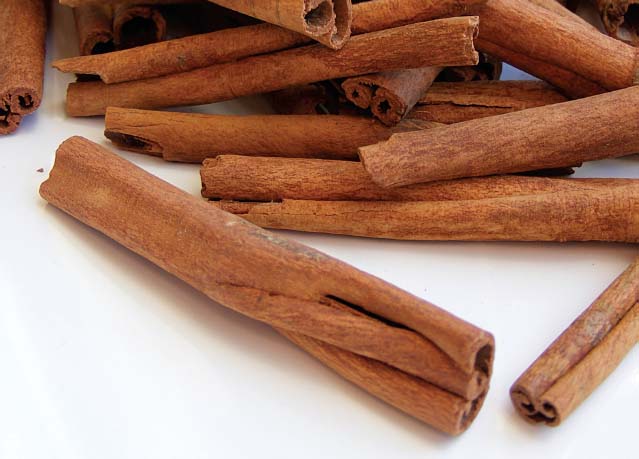
To tap into its blood sugar management properties, cinnamon really needs to be used quite liberally in cooking, and in smoothies, etc. Just a teaspoon or a shake of the powder would be insufficient. Cinnamon can also be consumed as a tea made from the dried bark. Prepared in this way it acts as a gentle warming circulatory stimulant.
Garlic is one of the most powerful medicines on the entire planet, and its amazing properties could fill an entire book by itself. It is a remedy that has benefits for virtually every system in the body. Everyone is aware of the strong odour of garlic. It is this pungent and powerful aspect of the plant that is responsible for a large part of the medicinal properties of garlic. These compounds, also known as volatile factors, include the sulphur-based chemicals allicin, diallyl disulphide, and diallyl trisulphide to name but a few. Many of these chemicals become more active when garlic is crushed or chopped, as this starts an enzymatic process that releases more and more of these compounds. These pungent-smelling chemicals act as fabulous antibacterial and antiviral agents in the upper respiratory tract. They are not broken down by the body at all and are excreted from the body via, you guessed it, the breath (hence garlic’s powerful antisocial properties). These powerful chemicals destroy bacteria and viruses as they rush through the airways on exhalation. These compounds are also extremely active in the digestive tract and have a fantastic localized effect upon any kind of nasty invader in the gut, such as the yeast infection Candida albicans. The oils are powerful enough to kill this simple yeast on contact, and aid in its removal from the body.
One of the properties of garlic that has been all over the world press for the last ten to fifteen years is the protective effects it has on the cardiovascular system. There are literally hundreds of studies that have shown that garlic is able to offer some protection against the formation of plaques within artery walls. It is also well established that regular garlic consumption can help to lower the production of LDL (bad) cholesterol, and increase the production of HDL (good) cholesterol. It is not 100 per cent clear how garlic manages to do this, but it may be in part due to interactions that it has with the liver – the cholesterol manufacturing plant. There are also some reported effects against high blood pressure. It is believed that garlic is a very effective vasodilator, meaning that it can cause blood vessels to relax, which helps to lower overall pressure inside the vessels.
The sulphurous compounds in garlic have also been shown to interact with certain enzymes that cause inflammation to occur. This interaction actually gives garlic some notable anti-inflammatory properties, when consumed regularly.
There is also some evidence to suggest that regular garlic consumption may offer protection against colon cancer. It is believed that it can prevent cells of the colon from damage (antimutagenic), and can also stop any cancerous cells from growing.
 Best way to use
Best way to use
All ways and every way. Garlic is nearly always best used raw when you can stand it. Raw in salad dressings, sprinkled over roasted vegetables, added to various dishes at the last minute. Consuming it raw keeps the active chemicals intact. Whole slices of garlic can also be placed over fungal nail infections, and secured with a plaster.
This beautiful spice has been used in virtually every traditional healing system in the world, spanning millennia. It has been consumed in the traditional diets of almost every Asian country, and has become a very common ingredient in contemporary Western cookery too.
Ginger has been traditionally used for the treatment of stomach upsets such as nausea, morning sickness, and travel sickness. It is also a great carminative agent, meaning that it can disperse wind and intestinal bloating. Ginger is also a wonderful circulatory stimulant as it has the ability to relax the walls of the blood vessels, thus increasing blood flow. In this context it is a great remedy for cold extremities, and conditions such as Reynaud’s disease, where circulation is greatly affected.
There is another exciting action that ginger offers, which is the one that I call on it most often for. That action is as a powerful anti-inflammatory and pain-relieving agent. There is a group of chemicals in ginger called gingerols that are known to give the anti-inflammatory action. This is because they interfere with an enzyme called cyclo-oxygenase (COX) that is involved in switching on inflammation and instigating pain. By blocking these enzymes, gingerols are able to prevent inflammation from occurring in the first place. Gingerols are also potent antioxidants, which can also help in the reduction of inflammation, because some inflammatory processes involve the release of free radicals. Free radicals are highly reactive biochemicals that cause all manner of damage and chaos in the body. Antioxidants are nutrients and plant chemicals that can deactivate the mischievous free radicals and protect body tissues from their destructive actions.
 Best way to use
Best way to use
As a juice, or added liberally to cooked dishes.
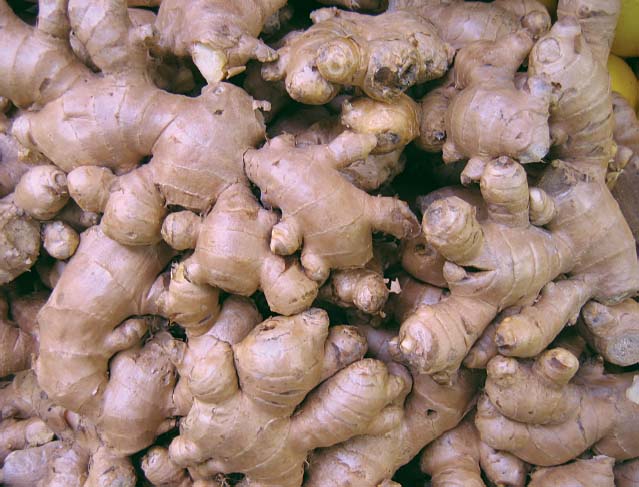
This staple of the British Sunday roast is actually a close relative of the cabbage. It has a long history of use in European herbal medicine. The leaves used to be a traditional salad vegetable, but it is the root that has given horseradish its reputation.
Horseradish contains a cocktail of volatile chemicals, including compounds such as myrosinase, that all react together to give it its mustard-like flavour. It is this cocktail of chemicals that give rise to its most famous of uses – as a remedy for sinusitis. The mustard-like chemistry can rapidly thin mucous and reduce inflammation while stimulating circulation.
Horseradish has also been traditionally used as a cholagogue, which means that it helps to increase the flow of bile from the gall bladder. This gives it a number of benefits. Firstly, it means that the liver is able to remove broken down toxins faster. Our liver uses bile as a transport medium to carry away any toxins that aren’t water-soluble and can’t be flushed out via the kidneys. The bile carries these toxins into the intestine for removal via the bowel. Secondly, horseradish was also traditionally used as a potent diuretic, meaning that it helped to increase urinary flow. It was mixed with cider vinegar and honey, and taken in drop dosages throughout the day.
 Best way to use
Best way to use
Ideally, the grated fresh root should be used. However, this is extremely strong, so may not suit everyone. Also, availability may be an issue. If fresh isn’t available, then a high quality horseradish sauce will give equally impressive results.
Marjoram is a type of oregano. It is a staple herb in both Greek and Italian cooking. It has also been used medicinally for centuries.
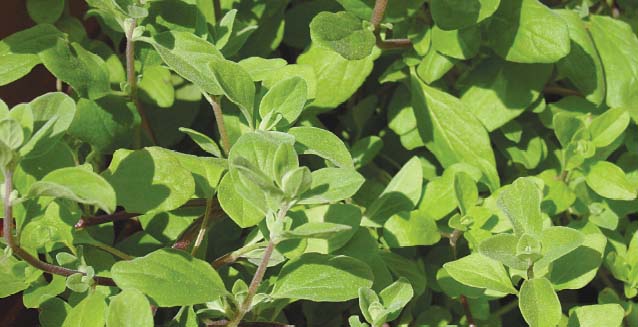
It contains two strong aromatic oils – thymol and carvacrol, which are believed to be responsible for the antimicrobial and natural antibiotic activity of marjoram. It has been traditionally used for food poisoning, amoebic dysentery, and other digestive upsets.
Marjoram is also an effective carminative, meaning it helps to break down gas within the digestive tract, to reduce bloating and flatulence.
 Best way to use
Best way to use
Fresh is key. I find it heavenly added to dishes such as roasted vegetables, and ratatouille. For relief of gas and bloating, I’d advise making a strong tea from the fresh leaves, and sipping slowly.
Mint has to be one of the most widely known and widely used herbs. It has a history of culinary and medicinal use in every conceivable culture, throughout all recorded periods of history, and it is a common feature in many gardens, parks, and wild open spaces. It is a native plant to the Mediterranean, and has found itself part of traditions stemming from ancient Greece, and ancient Rome. It was the Romans that gave us the ever popular mint sauce that finds itself onto many a Sunday dinner table.
Mint is a wonderful remedy for any kind of digestive discomfort. It is high in the essential oils ‘carvacrol’, ‘thymol’, and ‘menthol’ (the oil responsible for the unmistakable smell of mint). These powerful oils are highly effective carminatives, helping to break down and remove gas and wind from the digestive tract. The essential oils found in mint are also very effective antispasmodics. This means that they help to relax the muscles that line the walls of the digestive tract. This is useful for conditions such as irritable bowel syndrome and nervous diarrhoea.
Mint has also been traditionally used in cough and cold formulae. This is because the menthol content of mint has a reputation for “tightening” up the mucous membranes, helping to dry up excessive mucous during a cold. Menthol is also thought to be a diaphoretic, meaning that it encourages fever, thus helping to speed up infection recovery time.
Fresh is generally better. It is an easy plant to grow in a pot at home, so that it is always on hand when we need it. For digestive problems, a tea made by infusing the fresh leaves in boiled water for 15–20 minutes is delicious and effective. Can also be eaten whole in any dish you fancy.
Mustard is a member of the cruciferous family of vegetables. This botanical family also includes broccoli, Brussels sprouts, and cabbage. There are several different types, but the one most commonly used is white mustard – the type that makes the typical yellow English mustard condiment, that so many of us know and love. The ancient Romans are believed to be the first to experiment with various ways of preparing mustard seeds in a variety of culinary contexts. The most well documented was the mixing of crushed mustard seeds with an unfermented grape juice, commonly known in that period as “must”. This combination made a preparation that was nicknamed “burning must”, or in the language of that period “Mustum ardens”. Hence the word “mustard” was born.
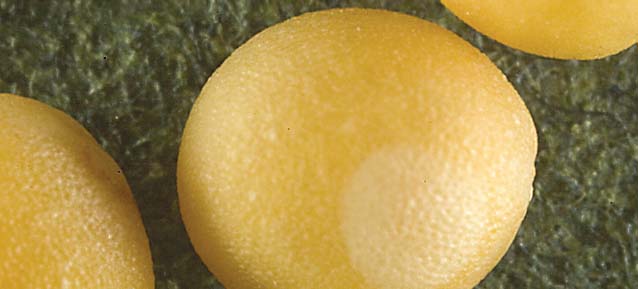
Mustard has been used medicinally since that period. The seeds are commonly used as a circulatory stimulant. The powerful essential oils that give mustard the distinctive fiery flavour can, like chilli peppers, cause a sudden and notable relaxation of the muscles within the blood vessel walls. Mustard has also been traditionally used as a poultice, applied directly onto the chest to help relieve a chesty cough.
 Best way to use
Best way to use
Use the seeds in curries, or a good quality fresh mustard, for a warming winter supplement, or to loosen mucous.
Parsley has almost become a bit of a cliché in the culinary world. For years, it was the stereotypical herb used to decorate and garnish dishes, sprinkled haphazardly around the plate. It is also a classic ingredient in sauces for fish.
Parsley is a very powerful diuretic. It contains a strong essential oil (responsible for its fragrance and flavour), that acts as a very mild irritant to the filtration system in the kidney – the nephron. This irritation is harmless, yet notable enough to cause the kidney to increase the volume of urine that passes through at any one time. This makes parsley a great food to consider in cases of water retention. It should be avoided completely, however, if you have, or have recently had, a kidney infection or have any history of kidney disease.
 Best way to use
Best way to use
Use fresh in a salad, or as a fragrant, earthy tea.
It’s a fair assumption that pepper is on almost every table or in every kitchen in the UK and US. It has become a universal seasoning. This everyday addition to food gives us a little bit of an indication as to the way in which pepper was traditionally used as a medicine.
Pepper has long had a reputation of being a digestive aid. It is said to increase the force and regularity of peristaltic contractions (the rhythmical contractions that move gut contents along), and stimulate appetite. In Ayurveda, the traditional medical system of India, pepper is one of the favourite spices used to invigorate digestion, stimulate appetite, and to treat nausea. Pepper has such a powerful stimulatory, almost irritant, effect upon the digestive tract, that some patients awaiting abdominal surgery are advised not to consume it.
Pepper is also a diaphoretic, so is useful for encouraging a fever, which can help to reduce recovery time, when fighting an infection.
 Best way to use
Best way to use
Pepper can be incorporated into a herbal tea blend (use of pure pepper tea is not advisable), or added directly to food. In cases of weak digestion and poor appetite, a teaspoonful of ground black pepper can be taken, and washed down with a small glass of water.
Rosemary is without doubt one of the most commonly used, sold, and grown herbs in the UK. It is a very vigorous plant, which can take over a herb garden very easily if not kept in check. It is a native to the Mediterranean, and has been a part of Greek culture for centuries.
In Greece, it was traditionally used to enhance and to stimulate memory. This use still holds strong today, and rosemary is one of the most commonly used herbs in Western medical herbalism, for forgetfulness and a fuzzy head. Rosemary has this property due to its essential oil content. These powerful oils, like many of the culinary herbs, cause a widening of the blood vessels. This enhancement of circulation improves blood flow to the brain, and hence is believed to be the reason why rosemary delivers such improvements to memory. Rosemary, for the reasons outlined above, is also a common herb of choice for enhancing circulation in general. Any conditions such as cold fingers and toes will benefit greatly from the regular consumption of rosemary.
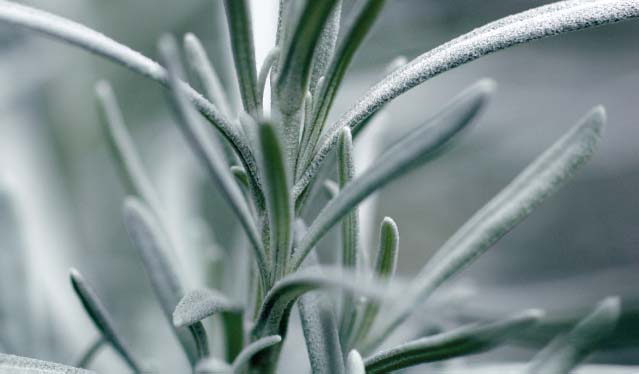
Rosemary has also become a popular anti-inflammatory herb of late. It contains a very powerful antioxidant compound called rosmaric acid. Some encouraging recent trials have suggested that rosmaric acid is able to combat inflammation, by causing a localized reduction in some of the chemicals that encourage inflammation.
Rosemary is also antispasmodic (helps to calm digestive cramps), and a diuretic.
 Best way to use
Best way to use
As a tea, or added fresh (don’t overcook or process) to meals such as roasted vegetables, breads, potato dishes, etc.
Sage is another of our most widely known and widely used herbs. A staple of British cuisine, sage finds itself on many a Sunday dinner plate. Who can resist some sage and onion stuffing? Sage is viewed as a sacred plant in many cultures. It has been used in blessing ceremonies by Catholic priests, Native Americans, and some South American cultures. It is also often used for “smudging”. This is the burning of sage, that has been tied up in a bundle, to “clear the energy” of a room or space.
Sage has gained the reputation of being an effective remedy for hot flushes associated with the menopause. It is often recommended to be used as a tea, while experiencing a hot flush. It is not entirely clear how sage does this, but its anecdotal track record is rather impressive. It is also believed to be antihidrotic, meaning it reduces perspiration. It is also believed to reduce lactation, so any pregnant or breastfeeding women should avoid consuming sage in high amounts.
Sage is also a renowned antibiotic agent. It contains powerful fragrant essential oils that seem to be very good at killing harmful oral bacteria. This is why sage has been a popular ingredient in herbal mouthwashes and breath fresheners. Many people believe that this was one of the major reasons that sage was originally included in many meat-based recipes – to help destroy any harmful bacteria that may be in the food. It was also used as a compress, applied directly to wounds, to minimize the risk of infection.
Sage is also believed to be a stimulant, general tonic, and memory aid.
 Best way to use
Best way to use
As with many of the herbs and spices, fresh is always the best. Take as a strong tea for hot flushes, or incorporate into salads or cooked dishes for its general tonic properties.
Another of the classics, thyme is one of the true garden heroes. It is another Mediterranean staple that has become quite common in British cuisine. Frequently used in casseroles, breads, on pizzas, and in many meat-based dishes.
Thyme is also an old faithful, staple ingredient in any herbalist’s medicine cabinet. It is very high in three exceptionally powerful essential oils – borneol, geraniol, and thymol. These potent oils give thyme its renowned antibacterial properties. Thyme is traditionally used as a gargle, and seems to be particularly effective at treating strep throat infections and tonsillitis. When used topically, thyme is also a potent antifungal.
The most interesting thing about thyme, in my opinion, is the evidence emerging that thyme may be highly beneficial for the health of the brain. Early studies suggest that something in thyme’s chemistry enables it to increase the levels of a certain fat, called DHA, into cell membranes. DHA is something that is created in our bodies from dietary omega 3, from sources such as nuts, seeds, and avocados. It is used to maintain the structure of cells and tissues, and is most widely found in nerve cells. In our brain and nervous system, the cells have a very unique and specialized structure. They have large, elongated, fatty capsules along their entire length. These capsules do not touch, however. There is a tiny gap between the point where one capsule ends and the next starts. As you may know, each cell in the brain and nervous system communicates with the next via electrical signals. To make these signals travel at high speed, the cell allows the electrical signal to jump along the cell surface, using these little “unexposed” areas between capsules. The fatty substance DHA is vital for keeping the structure and function of this system in check. Therefore, by ensuring that we have healthy levels of DHA in the cells, we can help these cells to work to their optimal potential, and it is here that the consumption of thyme looks most promising.
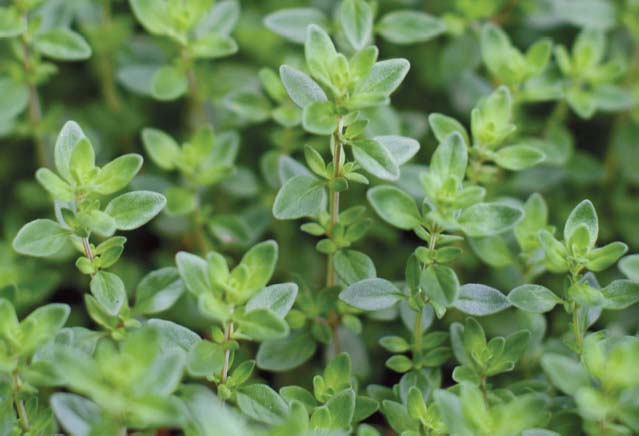
Use either fresh or dried. The secret is to add it to dishes at a fairly late stage where possible. This will deliver flavour without damaging too much of the active chemistry.
Turmeric, the staple ingredient of Indian curries, is in the same family as ginger, and shares some of its properties. It is a knobbly brown root, with vivid orange flesh, and a zingy invigorating aroma. Turmeric has been used in traditional Indian Ayurvedic herbal practices for centuries, and has even made its way into cosmetic products.
Like ginger, turmeric is a powerful anti-inflammatory agent. The chemicals that give turmeric its distinctive vibrant yellow/orange colour are key to its powerful inflammation-busting activity. These are a chemical group known as curcuminoids. The anti-inflammatory activity of these compounds has, in clinical trials, been shown to be comparable to such powerful drugs as hydrocortisone, phenylbutazone, indomethacin, and Nurofen. These amazing compounds reduce inflammation, by blocking the activity of a group of chemical messengers called prostaglandins. You may recall from previous sections of this book that prostaglandins are a group of chemical compounds made in the body from dietary fats. Part of their physiological role is to regulate the inflammatory response. This involves a series of chemical reactions that finally lead to a localized inflammatory response. Curcuminoids from turmeric block the normal progress of these chemical reactions and prevent them from reaching their goal.
Turmeric is also a great spice for the health of the heart and cardiovascular system. It is what herbalists refer to as “anti-platelet”. Platelets are small, disk-like cells within the blood that are involved in the formation of blood clots, and are the agents at play when a scab forms. Clotting is a vital process that protects us from bleeding to death from the smallest of cuts, and allows us to heal internal injuries rapidly. However, it is problematic when we clot excessively, as this, along with other active risk factors, puts us at greater risk of heart attack and stroke. Turmeric helps to reduce the platelets’ clotting capacity – not to the extent that it becomes dangerous, but enough to offer that little bit of extra protection against heart attacks.
Turmeric is also believed to be “hepato-protective”. This means that it may help protect the liver from damage. The bright orange pigments, the curcuminoids, are also very powerful antioxidants. This is the most likely reason why turmeric offers this protection to the liver.
 Best way to use
Best way to use
If you can find the fresh root, then that’s fantastic. You could use it grated or finely chopped. Chances are though that you will find it as a powder. Add this at any stage of cooking to curries, savoury dips, stews, soups, etc.
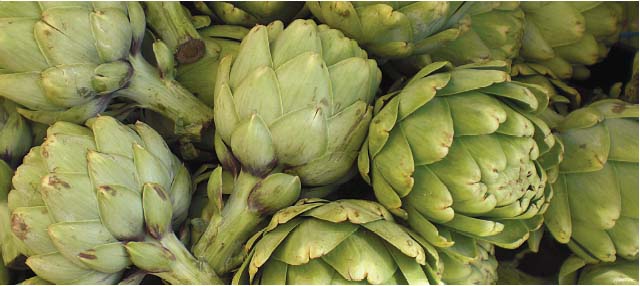
Globe artichoke is actually a type of thistle, and is probably one of those vegetables that you have always seen on the supermarket shelves, and thought... hmm... looks nice, but I have no idea what to do with it! This unusual-looking vegetable is actually an unopened edible flower. The outer leaves are very tough and inedible, but the central flesh (hearts) is absolutely heavenly to eat.
Globe artichoke contains a group of chemicals called caffeoylquinic acids. These compounds are responsible for artichoke’s traditional usage for liver disorders. Artichoke comes into the herbal category that herbalists call cholerectic. This means that it increases the flow of bile from the liver. This is important because the liver uses bile as a transport medium for toxins that it has broken down, that need removing from the body. Bile is also involved in the digestion and absorption of fat, so eating artichoke alongside a fatty meal aids digestion. It is also believed that artichoke may also be able to lower cholesterol by having an impact on the way in which cholesterol is broken down in the liver. The cholesterol-lowering effect may also be due to artichoke’s ability to speed up the movement of fatty material (which is the material used to make cholesterol) out of the liver.
Artichoke is also believed to be an ideal diabetic food. This is because it is high in a special kind of sugar known as inulin. Inulin is believed to play a beneficial role in blood sugar management, helping other sugars consumed alongside it to be released into the bloodstream at a far slower pace.
 Best way to use
Best way to use
Lightly roasted, or baked. As fresh as possible.
I love asparagus, especially lightly steamed with a little melted butter and black pepper. Heaven! Luckily, it is a very nutrient dense and medicinal vegetable, not to mention the slightly luxurious associations it has.
Asparagus has proved to be a very effective diuretic agent – meaning it will increase urinary output. This is thanks to a nitrogenous compound called asparagine. This is why asparagus has been used in traditional medicine as a tonic for kidney health and for fluid retention. If kidney output is stimulated, then a far more rapid removal of excessive fluids in the body will ensue. This stimulation will also give the kidneys a bit of a flush too, helping to remove metabolic waste and debris.
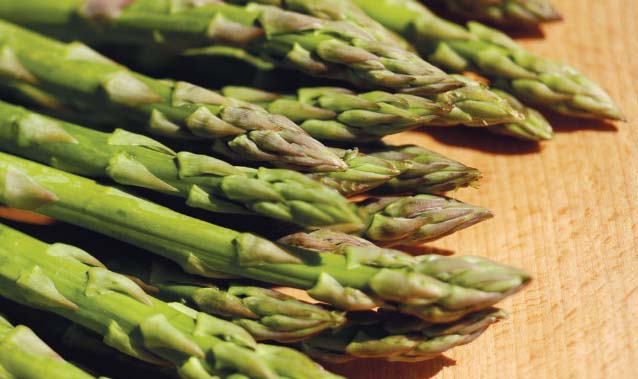
Asparagus is also showing some potential as an anti-inflammatory food. It contains a powerful phytochemical called racemofuran, which is believed to work in a similar way to a group of pharmaceutical anti-inflammatory drugs called COX-2 inhibitors. This means that it can actually partially block the series of chemical chain reactions that arise when the inflammatory response is activated.
Some members of the asparagus family have been used for centuries in traditional Indian Ayurvedic medicine to increase fertility and to regulate the menstrual cycle. It is believed by many that the regular, culinary asparagus has the same properties. There is little phytochemical data available at present that supports this, however.
 Best way to use
Best way to use
Steam, or sauté. Do NOT boil!
I love these Mediterranean delights. They are just like big sponges that will suck up almost any flavour that is added to them.
Aubergine has often been seen as having little in the way of nutrition, or major health benefit, apart from being a good source of dietary fibre. However, in recent years, a compound called nasunin was discovered in the skin of aubergine. Nasunin has been shown to protect the fatty membranes of cells within the nervous system and brain from chemical damage. Scientists now believe that long-term consumption may offer some protection against degenerative mental disorders such as dementia.
 Best way to use
Best way to use
Lightly cooked, roasted and puréed to make baba ganoush.
Beetroot has to be one of my absolute favourite vegetables ever. There is nothing quite like big chunks of slow-roasted beetroot, with horseradish sauce, as an accompaniment to my Sunday lunch. It is in the same family as spinach and chard, and comes in many different varieties, with colours ranging from white, through to vivid golden yellow. For our purposes here, however, we will focus upon the common, deep purple variety.
The deep purple pigment, that gives beetroot its characteristic colour, that stains almost anything it touches, is part of the key to beetroot’s medicinal properties. This vivid colour pigment is a compound called betacyanin. Betacyanin has been shown to increase certain chemical functions in the liver that form part of what is known as “phase 2 detoxification”. It essentially speeds up certain chemical reactions that are involved in the smooth running of this process. Phase 2 detoxification is one of the series of processes that the liver uses to turn harmful toxins, such as alcohol and metabolic wastes, into harmless substances that can easily be removed from the body. This makes beetroot a useful food for detoxification and liver-cleansing.
Beetroot is also known to have a very beneficial effect upon blood pressure. It contains a chemical called nitrate. When we consume nitrate, it gets converted by the body into a compound called nitric oxide. Nitric oxide is a powerful vasodilator (widens blood vessels). It does this by forcing a sudden relaxation of the muscular walls that line the blood vessels. When these muscles relax, the internal size of the vessel increases, so, therefore, the pressure within the vessel naturally decreases.
Beetroot is also believed to be a powerful anti-cancer food. This is because it increases the production of one of the body’s own “anti-cancer chemicals”, produced to protect cells from damage. This protective chemical is a compound called glutathione-stransferase.
 Best way to use
Best way to use
Juiced, grated raw, or roasted in big chunks.
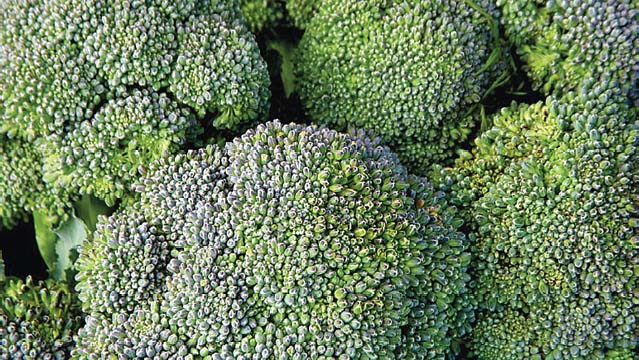
Broccoli, like cabbage and cauliflower, is a member of the cruciferous vegetable family. Unlike most of the ingredients discussed in this book, broccoli doesn’t have a fast-acting medicinal effect. It does, however, have some very powerful disease-preventing properties that warrant its discussion.
Broccoli is probably the most highly regarded food for cancer prevention. This is due to the high levels of three powerful cancer-fighting phytochemical groups – isothiocyanates, indoles, and dithiolethiones. These almost unpronounceable chemicals protect the body from cancer by regulating the way in which cells respond to environmental elements that can potentially trigger cancerous changes within the DNA of the cell. They do this by increasing the cell’s natural defence mechanisms against damage, making it more resistant.
 Best way to use
Best way to use
As fresh as possible. Steamed, stir fried, or raw.
Without doubt, our most abundant and affordable green vegetable, and one of the most powerful foods you can include in your weekly diet. Better still, they are easy to grow, and it won’t take long to have your own supply of fresh, locally grown, super greens.
Cabbages, like all of the brassicas, contain a whole cocktail of phytochemicals that can have a huge impact upon normal detoxification of the cells in all of our tissues. They do this by interacting with the control centre for each cell – its DNA. They communicate a message that encourages the cell’s DNA to produce more enzymes within the cell that actually enable and facilitate the normal detoxification and breakdown of potentially harmful toxic material.
Cabbages are also a rich source of phytochemicals such as indole-3-carbinol and isothiocyanates, which have potent anti-cancer properties.
There is also a link between cabbage consumption and lowered risk of heart disease. This is because cabbage has a strong ability to lower a compound called homocysteine, which is believed to be one of the biggest risk factors for heart disease. It is not entirely clear whether homocysteine itself plays a functional role in the development of heart disease, or whether its presence is just an indicator of other risks. What is clear is that lowering elevated levels certainly does reduce one’s heart attack risk.
 Best way to use
Best way to use
Steamed, sautéed, or raw. Boiled cabbage is of no great use to man or beast, unless of course creating noxious odours in your kitchen serves a practical use. Boiling this precious vegetable will make it devoid of any of the good stuff.
These bright orange vegetable staples are among our most commonly consumed vegetables, although quite often we find them boiled to the point of semi-existence, alongside a few manky peas. However, carrots can be incredibly powerful both nutritionally and medicinally.
The bright orange colour of carrots is due to the massive concentration of the plant source of vitamin A, called beta carotene. This chemical is a colour pigment from the carotenoid group, responsible for colours ranging between pale yellow to deep dark red in the plant kingdom. Beta carotene is known to be highly protective of the heart and cardiovascular system, by helping to protect the structural integrity of the inner lining of the blood vessels, thus helping to reduce rupture and injury that can lead to the formation of clots.
Beta carotene is also famous for improving eye health. Firstly, it improves night vision, hence the old wives’ tale “carrots help you see in the dark”. Secondly, it is known to protect an area of the eye known as the macula densa; the area that falls victim to macular degeneration. This age-associated damage to the eye is caused by the activity of free radicals. Beta carotene has an affinity with this tissue, and is extremely good at disarming this type of free radical.
 Best way to use
Best way to use
Raw, grated in salads, or as a crudité with a dip such as hummus. This combination is especially good, as the fats in the hummus will help the beta carotene to be absorbed faster.
This stringy salad staple may seem like the most innocuous food in the world. It is definitely one of those foods that people either love or hate, and sometimes getting it down many of my clients can be a real challenge. This food that we all imagine to be dull and useless is, in fact, a very powerful medicinal food.
Celery contains a powerful compound called 3-N-Butylphthalide (3NB for short), which is a powerful painkiller. I have found it to be useful in cases of arthritis, sprains, and many issues involving chronic pain. Its effect isn’t hugely long-lasting, like taking a prescription painkiller, but it is a beautiful example of the type of simple food that can be incorporated into one’s daily routine, that can assist in overall healing and comfort.
Celery also contains a fragrant group of chemicals called coumarins. These are part of the chemistry that give celery its distinct smell, and are also the same chemicals that fill the air when a lawn is being mown. Coumarins are amazing at ridding body tissues of any buildups of fluid. They help to stimulate the lymphatic system, which is the main system that drains and clears waste and gunk that is released from the tissues. Coumarins help to increase uptake of excessive fluids by the lymphatic system. Coumarins also have a mild diuretic property, which further support their ability to remove excess fluid from the body. This makes celery an ideal food for cycle-related fluid retention, arthritis (removes fluid build-up from joints), and can even help with the lowering of blood pressure.
 Best way to use
Best way to use
Eaten raw or juiced. Cooked celery is completely useless as even the slightest heat exposure can break down its active constituents, leaving it with not much else to offer.
Fennel is another of those vegetables that many people seem to see on the supermarket shelf, pick up with a semi-bewildered expression, and then put back and move on. It is definitely overlooked. This is unfortunate, because fennel has some wonderful health-giving properties, and it is such an easy vegetable to prepare, and gives a glorious flavour.
Fennel contains a very powerful and beautifully fragrant essential oil called anethol. Anethol has been shown to be a very powerful anti-inflammatory. It delivers this activity, by reducing the amount of certain chemical signals released by some white blood cells that encourage localized inflammation. Anethol is also the main chemical responsible for fennel’s famous antispasmodic effects. This means it helps to reduce and regulate normal contractions of the gut wall. This makes fennel useful in cases of painful abdominal cramps and IBS. The essential oils in fennel are also carminative, meaning they help to reduce and disperse gas from the digestive tract.
Fennel is also relatively high in phyto-oestrogens. These are plant chemicals that are similar in chemical structure to the female hormone oestrogen. These compounds are known to be of great use in any type of condition where a change in oestrogen levels is causing symptoms, such as menopause and pre menstrual issues. In cases where oestrogen levels are very low, it is believed that phytooestrogens are able to make the body think that there is more oestrogen available than there really is. In cases where oestrogen is too high, it is believed that phyto-oestrogens can actually compete against natural oestrogen, for binding sites on the outer surfaces of cells, thus reducing oestrogen’s impact.
 Best way to use
Best way to use
Sliced raw, or lightly roasted. The fine top foliage can be chopped and eaten raw.
Kale has easily got to be one of my favourite foods. It is so juicy, green, delicious, and divine. It is wholesome and filling and leaves me feeling wonderful after I have eaten it.
Kale is proving to be an especially useful food for those with high cholesterol. This is because it contains a chemical called indole-3-carbinol. This miraculous compound actually reduces the production of a cholesterol-carrying molecule called apolipoproteinB-100. This is one of the main transporter chemicals involved in carrying cholesterol away from the liver to the other tissues in the body, which may lead to a harmful build-up. Indole-3-carbinol reduces this cholesterol by around 56 per cent. This clever compound also seems to have an impact on the extent to which the liver manufactures blood lipids (fats), which can lead to elevated cholesterol.
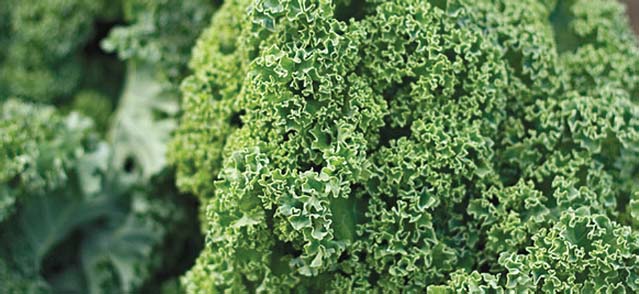
Kale, like any of the brassicas, contains a very high level of sulphur-based compounds, including glucosinolates, which help to increase cells’ ability to process and break down potentially cancerous chemicals. There is a long accepted link between the consumption of cruciferous vegetables and reduced risk of cancers. This is most likely the reason why.
 Best way to use
Best way to use
Delicious eaten raw. Drizzle with olive oil and a pinch of salt, and massage to wilt the leaves. If you cook it, steam it lightly, or stir fry quickly.
I never used to like leeks particularly, but now I just can’t get enough of them. Every Sunday, I have leeks with butter and black pepper as a side accompaniment to my Sunday lunch, week in, week out.
Leeks, like all of the alliums, are very high in sulphur-based compounds such as allicin that can help to reduce clotting in the blood, and can give a notable antiviral effect. These compounds also play a role in naturally lowering cholesterol, and protect from certain cancers.
There is another interesting cancer-fighting phytochemical that is found in leeks. That is a compound called kaempferol. A well known Nurses’ Health Study, that ran between 1984 and 2002, revealed that women with the highest intake of kaempferol had a 40 per cent reduction in the risk of developing ovarian cancer. While this observational study hasn’t been backed up by further clinical data, it certainly gives some interesting information about the potential properties of this often underrated allium.
Any really. I have a preference for sautéing it in olive oil and butter, with a good pinch of sea salt and black pepper. Also great in soups.
One of the kings of the vegetable kingdom without a shadow of a doubt. I use them in nearly every savoury dish that I make. I especially love red onions. The gorgeous red/purple pigment delivers higher levels of antioxidants than the white counterparts.
Onions are a very rich source of an antioxidant compound called quercetin, which is a very effective natural antihistamine. Histamine is a chemical that is released locally by white blood cells when they are exposed to certain stimuli that cause allergic type symptoms. It is this localized histamine release that causes symptoms such as itching, sneezing, inflammation, etc, that we associate with allergy. Quercetin appears to be very effective at reducing the ability of these cells to release their histamine when stimulated.
Onions are also believed to be potent anti-inflammatories – especially for the respiratory tract. They contain compounds that have been shown to inhibit the effect of specific communication chemicals that increase the production of pro-inflammatory prostaglandins (see the Joints section). These body chemicals, called lipoxygenase and cyclooxygenase, are substances that actually cause a drastic shift in the production of these problematic inflammatory stimulants, so any natural substances that can reduce this from occurring can have a massive impact upon the severity and duration of inflammatory episodes. Granted, onions aren’t as powerful as taking a high strength drug, but like foods such as ginger and turmeric, they are an ideal food for helping to deliver an overall reduction in inflammation.
Onions are also a wonderful food for overall digestive health. They contain a fabulous compound called inulin that works as a prebiotic agent. This means that it encourages the growth of good bacteria in the gut, by providing them with a food source. This helps to increase the numbers of the good, and decrease the number of the bad, fine-tuning digestive health when consumed regularly.
 Best way to use
Best way to use
Raw or lightly sautéed.
These crunchy salad vegetables pack quite a powerful punch, both medicinally and nutritionally. From the nutritional perspective, they are very high in vitamin C, some of the B vitamins, and also vitamin A.
Peppers, especially the red ones, are very dense in compounds called carotenoids. These are colour pigments in plants that can range from yellows, to oranges, to reds. These powerful pigments have a strong antioxidant activity and have been linked with increased protection against cancers. They are also believed to play a role in slowing down age-related damage to the eyes, and offer protection against cataracts.
 Best way to use
Best way to use
Raw or very lightly stir fried or sautéed.
Once considered the dieter’s “enemy”, these starchy staples are going through something of a renaissance. I have to admit, I never ate them often, but now Sundays and roast potatoes are a symbiotic relationship in my eyes! And now that new research has revealed some amazing chemical properties, I can eat these almost guilt free!
New research has identified a compound in potatoes called kukoamine. This rare compound is found in some Chinese herbs, and nobody thought for a second that it may turn up in the humble spud! Kukoamine has actually been shown to lower blood pressure. Research is still in the very early days and, as such, nobody is entirely sure how kukoamine does this, or indeed how many potatoes need to be consumed in order to have a significant impact.
Generally, steamed, boiled, or baked. Keep consumption of roasted/fried potatoes to a minimum... roasties are supposed to be a once a week treat after all.
Popeye’s famous staple food. Spinach is, without doubt, one of the most powerful foods on the planet. Firstly, it is a nutrient-packed powerhouse. It contains more usable protein gram for gram than a sirloin steak; more usable calcium than any dairy product, and a whole host of B vitamins.
More exciting than this, though, is the huge array of cancer-fighting compounds found in spinach. It contains a group of 13–14 flavonoid chemicals, collectively known as methylenedioxyflavonol glucuronides (try saying that one really fast!). These compounds have proved so powerful, that they have prompted myriads of clinical trials with spinach extracts. These trials have shown a high level of protection against cancers of the stomach, prostate, and the ovaries. The picture is especially interesting in the case of prostate cancer. One of the chemical fractions of the chemical group mentioned above is a compound called neoxanthin. This amazing phytochemical has been shown to force cancerous prostate cells into a state that is known as “apoptosis”, which is the suicide state programmed into each and every cell in the body. When this function is stimulated, the cell dies in minutes. The fascinating story doesn’t end there. When neoxanthin is being digested and processed in the intestines, a certain proportion of it will be converted into a substance called neochromes. These substances put cancerous prostate cells into a state of stasis, which helps to slow down any kind of major progression of the disease.
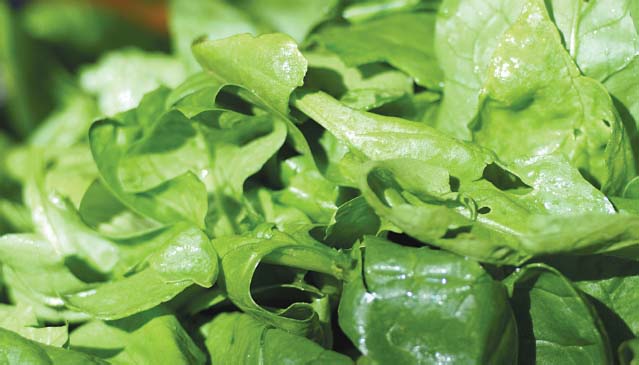
So what are you waiting for folks, get that spinach down you!
Raw is absolutely the best way to consume spinach, and it makes the base of virtually all of my salads. You can also steam and sauté it. However, because many of the active compounds in spinach are water-soluble, boiling causes them to leach out into the water, which means that boiled spinach is about as much use as an ashtray on a motorbike, so forget that idea!
I absolutely love sweet potatoes. I love the colour, the texture, and the delicious sweet flavour. I tend to use them in curries and in soups too.
Sweet potatoes are a very dense and rich source of the potent antioxidant beta carotene. This is the compound responsible for sweet potatoes’ characteristic, bright orange colour. Beta carotene is not only the plant form of vitamin A, it is also a powerful anti-inflammatory. This is mostly due to its antioxidant activity being able to buffer some of the nasty inflammatory activity delivered by white blood cells.
Sweet potatoes also contain a unique protein. This is a storage protein that the plant uses as a food source as it is growing. This fantastic protein is what is known as an immunomodulator, meaning it can help to regulate certain responses within the immune system. Again, much of the research regarding this activity is in its early stages. What we do know, however, is that it interacts with elements of the immune system that instigate and worsen the inflammatory response.
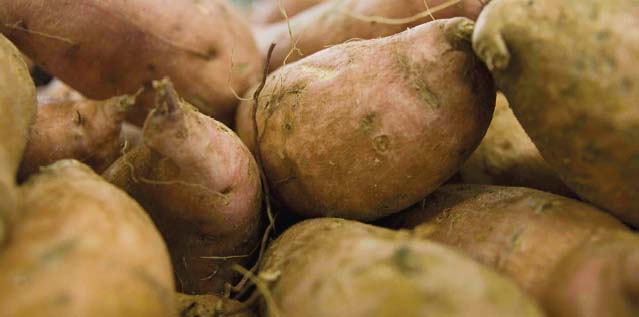
I also find sweet potatoes to be wonderful for digestive health. They contain a wonderful sugar called fructo-oligo-saccharide (FOS). This sugar is a prebiotic, meaning that it can actually encourage the growth of good bacteria in the gut. When the population of good bacteria in our digestive system feeds upon this sugar, they begin to reproduce, thus increasing the colony. That’s not all. When the good bacteria feed upon FOS, they actually produce a chemical called butyric acid that can repair and strengthen the gut wall, helping to regenerate and rejuvenate the digestive tract.
Sweet potatoes are also believed to be very good for diabetics. It appears that they have an ability to help to stabilize blood sugar levels, and to improve cells’ responsiveness to insulin. It isn’t entirely clear what is responsible for this at present.
 Best way to use
Best way to use
I love them baked, in place of the traditional baked potato. They are also great in soups, curries, and roasted with garlic.